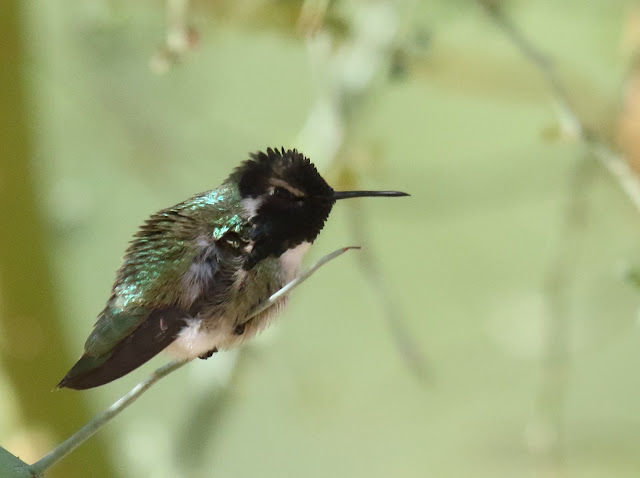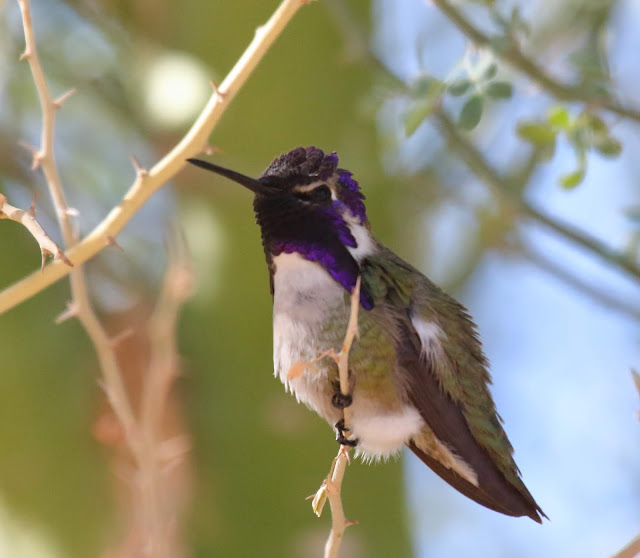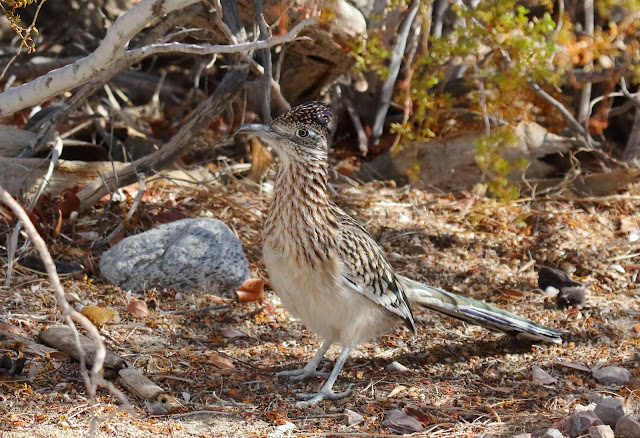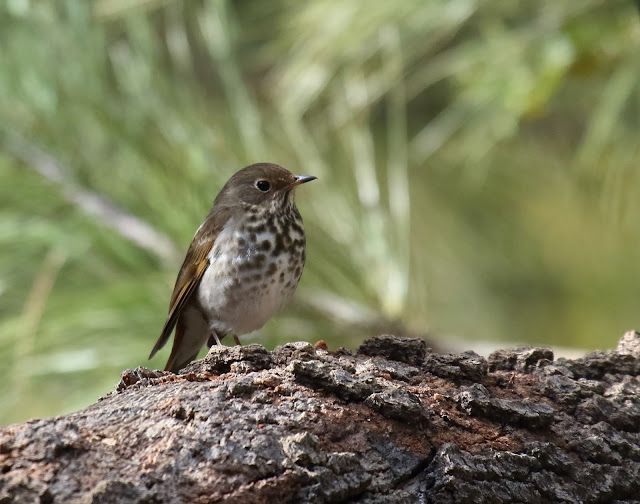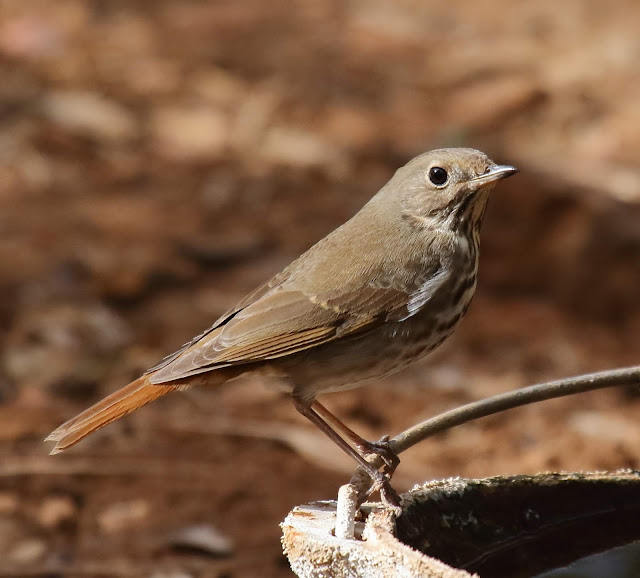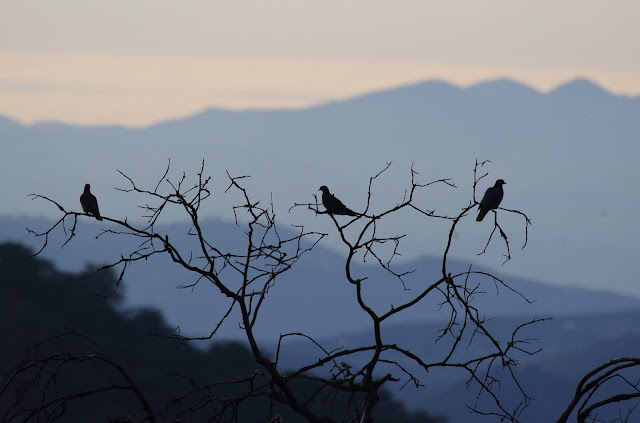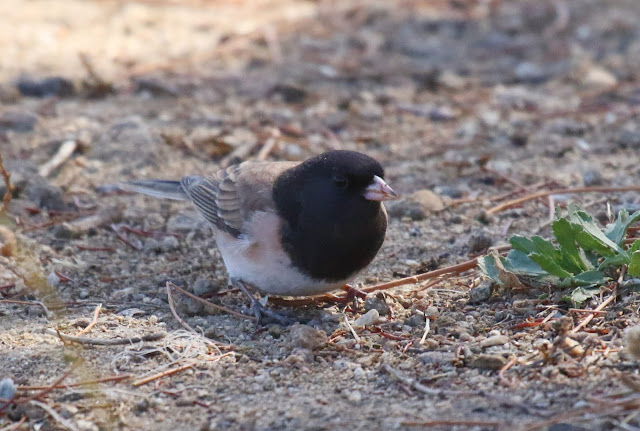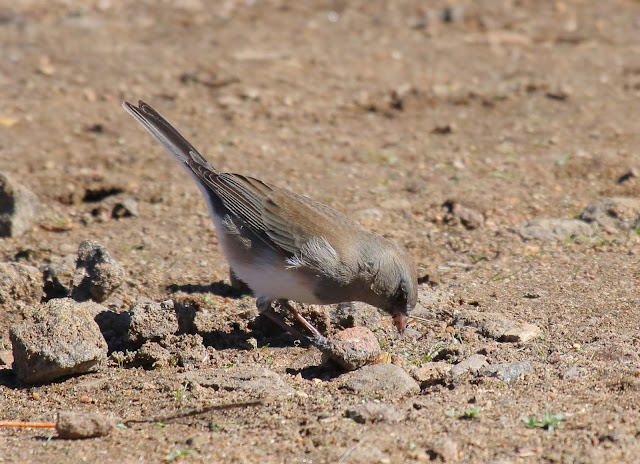In San Diego County they breed throughout, but most abundantly in spring in the Anza-Borrego Desert and in summer in the white sage of the coastal slope. They follow flower blooming. That is seasonally and elevationally. They move into recently-burned areas as the flowers bloom, but are less common after a year or two as the brush grows up.
In wet winters they are more abundant in the desert as flowers bloom and they arrive before December, so "wintering" and spring breeding numbers are about the same. The Borrego Springs Christmas Bird Count often records the nation's highest numbers. On the coastal slope they are more numerous in winter in lower residential areas with ornamental plantings. (San Diego County Bird Atlas)
There is usually a pair at the ABDNHA Borrego Botanical Gardens (link). That's where I photographed this colorful male recently.
 |
| Costa's Hummingbird. Borrego Springs, California. November 22, 2018. |



